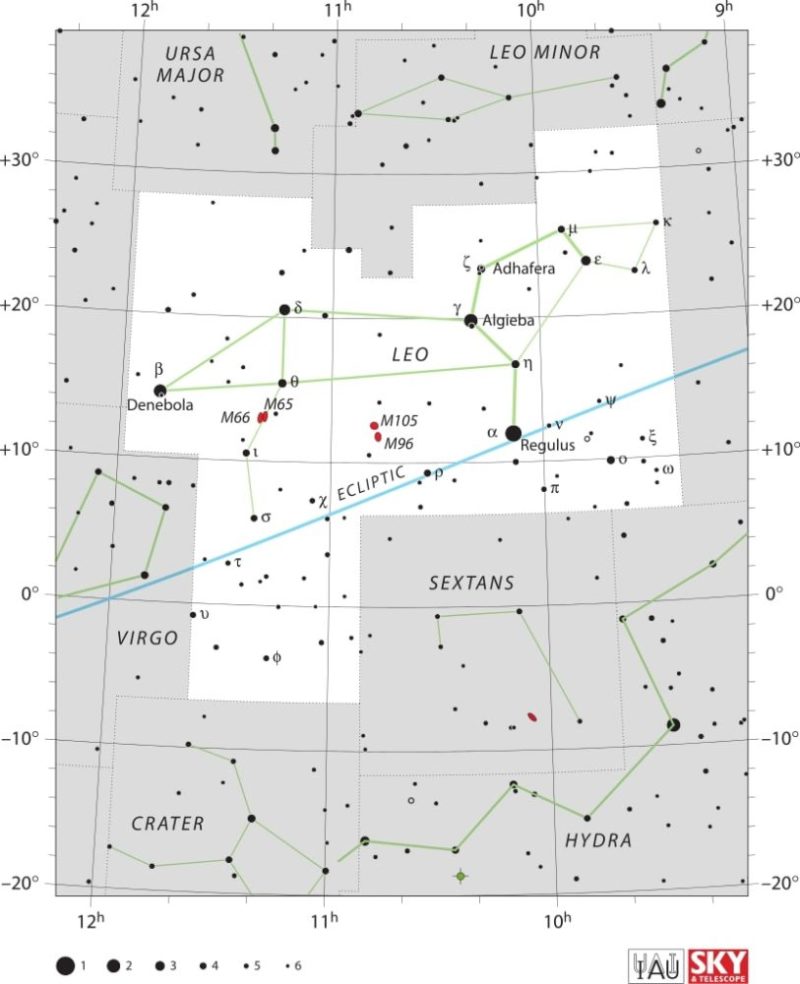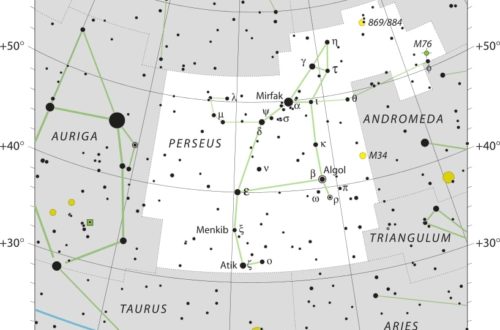Leonid Meteor Shower Guide

The Leonids are a well-known meteor shower that happens every year in November, showing fast and bright meteors across the night sky. Comet Tempel-Tuttle debris produces a truly spectacular meteor shower.
Most years, viewers can see about 15 meteors per hour, but the shower can bring much more during rare storms. The meteors travel fast, at 71 km/s, so they usually leave bright persistent trails that easily grab attention.
After sunset, clear, dark skies will provide the best opportunity to see the Leonid meteor shower, particularly in the early morning hours. This guide is meant to help you find out the best times and places to see the Leonids.
What Makes the Leonid Meteor Shower Special?
The Leonid meteor shower is notable for much more than its world-renowned “shooting stars.” What makes the Leonids so special, besides their comparatively high rates, is the brilliant nature of the meteors. These streaks are produced by Earth passing through the debris trail of comet 55P/Tempel-Tuttle. When Earth crosses this debris, that’s when the real show begins.
More Than Just Shooting Stars
Meteors are just tiny pieces of space rock that burn up as they hit our planet’s atmosphere. Before they blaze through our atmosphere, we refer to them as meteoroids. If they land on the Earth, they are referred to as meteorites.
The Leonids are special—not just because they put on a good show, but because of how they do it. Their meteors are incredibly fast, coming in at 71 kilometers per second. Some are large enough—roughly the size of a pea—to be seen as bright as the brightest stars.
The Comet Connection Explained
The origin of the Leonids lies in the comet 55P/Tempel-Tuttle. As the comet moves around the Sun, it sheds dust and rock. When Earth crosses this trail, those fragments strike our atmosphere and disintegrate.
Every 33 years, when the comet comes closest, the shower is much more robust. On occasion, even the Moon comes under fire, producing brilliant flashes known as lunar Leonids.
Why They Peak Mid-November
The Leonids peak in mid-November (on the 17th) because that’s when Earth runs into the densest part of the comet’s debris trail. On clear, cool, crisp fall evenings, those are perfect conditions for fireballs and meteors to make their appearances.
The timing coincides perfectly with Earth’s place in its orbit, which makes the show both highly predictable and easily visible.
Best Time to See the Leonid Meteor Shower
What makes the Leonid meteor shower most notable are its incredibly quick, bright streaks. A little advance planning can make all the difference to your viewing.
Mark Your Calendar: Peak Nights
Maximum activity will occur on November 17. You can still catch a great show on the day before or after. The shower is active from November 6 to 30.
Preparing for these peak dates—finding a good dark spot, being aware of the right weather conditions—can go a long way.
Factor in the Moon Phase
That’s important because moonlight can really drown out the dimmer meteors. It should be easier to see meteors during a new moon or when the moon has set, since darker skies provide better viewing conditions.
Consulting moon phase calendars in advance can help you identify the best window.
Understanding Leonid Intensity Cycles
These intensity cycles repeat approximately every 33 years, with the rarer storms generating hundreds of meteors per hour. The other years, rates remain low, usually 15 an hour at most. Tracking these cycles can be a useful way to identify future major surges.
Find Your Ideal Viewing Spot
Selecting the ideal viewing location is critical if you want to see the Leonids at their best. After all, where you watch from really does set the tone for the entire experience. A dark, open field far from city lights provides the ideal backdrop for viewing.
Why Dark Skies Are Crucial
Dark skies are imperative when you’re viewing meteors. Excess artificial illumination from cities or bright street lights washes out these dim arcs against the sky. As with any natural phenomenon, you want to get as far from those manmade lights as you can.
Check out your nearest dark sky park, or state park, or even a nice country road. According to DarkSky International, there are now officially certified dark sky places in almost every region in the U.S.
Check Local Weather Conditions First
Clouds and rain can definitely spoil your meteor shower viewing. Check reliable weather resources in advance. Since even a bit of cloud cover can spoil your experience, choose a night when the sky will be clear.
Consider Higher Elevation Views
If you can find a higher spot, such as a hill or mountain, it’ll provide a bigger and much clearer view. Consider views from the Rockies or even closer state park overlooks.
Fewer trees and less haze and cooler air make it easier for you to see more meteors.
How to Watch the Leonids
Seeing the famous leonid meteor shower is a special and immersive treat, nearly as exciting as a first-timer spotting their first meteor storm.
A little preparation will take you far in enhancing your good meteor viewing experience. Do your homework and come with an open mind. Either way, you’ll be in for a treat with a crisp evening among the stars! Inviting a friend or loved one to share the experience will enhance the fun and wonder.
Let Your Eyes Adapt Fully
Dark skies are essential for viewing the Leonids. Once you get outside, allow your eyes 20-30 minutes to adapt. Even a single bright light can put you at a disadvantage when stargazing.
Even a brief glance down at your phone drastically reduces your chances of spotting meteors. To allow your eyes to adapt fully, stay away from headlights, porch lights, and cell phone screens. If you need a minimal amount of light, red LED flashlights are friendly to your night vision.
Know Where to Look (Generally)
You don’t have to find the exact location in the sky. The radiant of the Leonids sits in the constellation of Leo.
A meteor may appear anywhere in the sky, sometimes as much as 30 degrees or more from the radiant. Locate yourself somewhere with a lot of open sky overhead and be prepared to scan the entire sky to catch the most meteors.
Why Binoculars Aren’t Necessary
Meteor showers are best viewed with the unaided eye. Using binoculars or a telescope greatly reduces your field of view, and you’ll likely end up missing these quick, bright streaks.
The wider you keep your view, the more meteors you’ll see and the more you’ll appreciate the sky without worrying about equipment.
Bundle Up for Chilly Nights
Nights can be chilly. Layered clothing, a warm sleeping bag, or a portable lawn chair keep you cozy, and can make all the difference.
Dressing in layers—hat, gloves, warm coat—will allow you to enjoy the show without worrying about the cold.
Pack Patience and Warm Drinks
Meteor showers are a marathon, not a sprint. Hot beverages such as coffee or cocoa help keep you warm.
Patience is one of the beauties of the experience. Whether talking with friends, stargazing, or listening to a playlist on your phone, there are many ways to enjoy the wait.
Conclusion
Leonids illuminate the autumn night sky, and each year tells a different tale. Millions take to their lawn chairs or blankets. They travel out beyond the bright city lights and look up at an unpolluted night sky.
The beauty of the show is that it never gets old. Memories and old photos linger with people just as much. Thus, every November, this small pleasure can be celebrated by friends, families, and total strangers alike. More than anything, though, watching the Leonids offers a welcome antidote to screens and sensory overload.
Get outside, catch a couple meteors and experience that awe induced by nature again. So next time the Leonids come around, keep your eyes open—you never know what you might catch.
Frequently Asked Questions
What are the Leonids?
The Leonids are perhaps best known for producing very swift, bright meteors, radiating from the constellation of Leo.
Where should I go to watch the Leonids?
To enjoy a good meteor viewing experience, try to observe from a dark, open area away from bright lights, such as parks or rural fields.
How many meteors can I see during the Leonids?
During peak activity, you should anticipate witnessing 15 meteors per hour on average, but in rare leonid meteor storms, this rate can significantly increase.
Do I need special equipment to see the Leonids?
No special equipment is required to enjoy the spectacular Leonid meteor storm; just your eyes, a comfy chair or blanket, and a little patience will provide a good meteor viewing experience.
Are the Leonids safe to watch?
Yes, the famous Leonid meteor shower is very safe to observe, as the meteors burn up in Earth’s atmosphere at altitudes of 70–100 km, well above your viewing location.
See also:
- Previous meteor shower: Northern Taurid Meteor Shower
- Next meteor shower: Alpha Monocerotid Meteor Shower
Would you like to receive similar articles by email?





